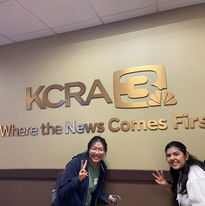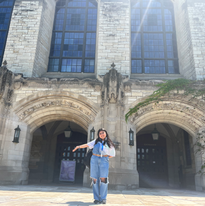Law
In the first semester of the Introduction to Journalism course, we learn and discuss various landmark supreme court cases and Californian laws regarding journalism and press freedom. Here is one example:
California Law: Leonard Law
“It is the intent of the Legislature that a student shall have the same right to exercise his or her right to free speech on campus as he or she enjoys when off campus.”
→ While Archer is currently a Free Press school, thanks to our relationship with administration, it is still important to recognize our rights as being a private school within California. The Leonard Law is one law that “forbids administrators from taking disciplinary action” of speech that would be protected by the First Amendment outside of campus. This law applies to all high schools and colleges in California, no matter if public and private. With this law in place, it helps publications thrive and perpetuate a “public forum” in the school community, enriching campus with interesting students opinions and discussions.
Archer Student Media Code of Ethics
At the core of everything done on The Oracle is ethics. Plastered on the wall of Ms.Taylor's classroom is a poster of the four pillars of ethics — the very same ethics we consider in every article or ethical dilemma we do. These pillars were based on the Society of Professional Journalists' Code of Ethics with additional source material adapted from the National Scholastic Press Association's Code of Ethics for High School Journalists. Here are a few examples from each pillar:
Pillar One: Seek truth and report it
"Strive for substantive stories that produce insight, generate accountability and inspire reader interest and engagement across the breadth of the school community"
→ This is vital for every piece of our publication, but I especially keep this tenant in mind for features. Features typically are the most researched, insightful pieces on the site as students are able to spend the most time crafting the article with potential multimedia feature. Therefore, I always sit down with a student to fully discuss their plans for a feature so we both are on the same page on how to go about their story as well as help them solidify or change their angle.
Pillar Two: Minimize Harm
"Show compassion for those who may be affected by news coverage. Use heightened
sensitivity when dealing with sources who have experienced trauma or are in distress,
and reject unreasonable intrusion by student media in their lives. Balance the public’s
right to know with an individual’s right to be left alone."
→ This tenant of Pillar Two is imperative to all continuous coverage news, such as the breaking news in Gaza from October. As soon as the news broke, The Oracle's editorial board hopped on a zoom to discuss what were the facts of the attack, the facts of events taking place at school and what our coverage related to the attack and war would look like. Understanding that Archer has a large Jewish student body who were deeply impacted by the events, we didn't interview anyone until weeks after the event. Even when emailing the Jewish Student Union to write the feature about them, I had our journalism adviser Ms.Taylor and our Editor-in-Chief reread the email several times to ensure I was writing with both the clarity of a journalist and the empathy of a human. When JSU asked for the interview to be several weeks later, I complied and waited until they were ready for the interview, which focused on the club's schoolwide action plan and not their own emotions of the event.

My initial email
My email specifically to the club advisers, following up if they were interested in a interview (the exec club member were interviewed separately due to scheduling)

Pillar Three: Act independently
→ We are lucky to be a First Amendment school thanks to our relationship with administration. However, last year while working on a feature examining food stipends and the school's budgeting system, I misunderstood that the interview would be vide recorded, when our head of school and head of finance only believed it was meant to be audio recorded. Moreover, many intro reporters were consistently asking administrators for interviews, while that same information happened to be easily accessible online, thus increasing the frustration from administrators. Thus, me and Lizette Gonzalez, the features editor of The Oracle last year, emailed an apology about the misunderstanding. Afterwards, our editor-in-chief and news editor during the 2022-2023 school year met with administration to explain why we seek out administration for article and how we'll minimize our emails to them. Our 2022-2023 EIC Greta Irvine then created a comprehensive document with email templates and guidelines when communicating with administration we continue to use today.
"Establish an open dialogue with school leaders while showing courage and
perseverance in defending media where students make final content decisions."


Pillar Four: Be accountable and transparent
"Acknowledge mistakes and correct them promptly. Except for minor grammatical or
proofreading corrections, explain content corrections and clarifications carefully and
clearly.
→ Even with multiple rounds of edits, sometimes a mistake or two fall through the crack. As an intro reporter, I was tasked to report on the games celebration the Asian Pacific Student Union was hosting for AAPI month. Because my next deadline was approaching, I strived to finish as fast as I could. Though journalism is often fast in our information-ridded society, it must be as accurate as possible at the time. I forgot to fact check the names, and used my school directory to find who the subject in the photo was, hoping I was right. A few days later, my journalism adviser let me know about how one of the teachers emailed me about the error. Quickly, I went to email an apology to the students I misidentified and vowed to be better. Now I have a protocol for myself to ask the individual their name when I'm certain I will be using their photo in the article.

The email from the teacher pointing out the error
My apology to all the students involved

Mission Statement
Each year, The Oracle editorial board makes edits to the running staff manual. The mission statement can be found in the About page of The Oracle. There are the elements I most quote and value from the mission statement:
"As a student-run publication, the Oracle’s mission is to provide a forum that encourages authentic voices and discussion in our increasingly diverse educational community. We serve as a resource for the Archer community and beyond to report relevant, interesting and newsworthy information. The Oracle staff is committed to fostering critical thinking in our reporting as well as providing diverse student perspectives. Through these endeavors, we strive to strengthen student voices."
→ One aspect of The Oracle I am especially proud of is the purely student-run aspect of the team. For years now, the publication has won a Press Freedom award, thanks to the trust our administration has in the publication. Without prior review or prior restraint and guidance but instead receive help from an adviser, students feel encouraged to write stories they are passionate about, even if their topics are controversial to some.
→ We encourage all students within the Archer campus to participate in The Oracle. This is through letters to the editors, columnists, podcasters and comments and likes on the website and social media. From this online interaction, we can generate conversation digitally and around campus on this vital forum we call The Oracle.
Copyright
In the 2022-2023 school year, The Oracle experienced copyright infringement, due to a photo used in a Op-Ed from a student from 2013. This was a learning experience to understand why we must be cautious about the photos and credits we give on our platform. While now students do not typically use stock images for their stories, using their own photos or graphic illustrations instead, our adviser gave us a lesson purely on how to check images from sites like Unsplash and Pixabay. Having these lessons helped me feel better prepared to both minimize and be cautious about using stock images. In the future, I want to create a reference slides or graphic to help students best understand how to credit properly.

News Literacy
During each summer, I've pushed myself to continue my journalism practice and expand my knowledge of reporting, interviewing, editing, leadership and multimedia. In the summer before my junior year, I participated in The School of The New York Times, where I had discussions about ethics and reported on New York City after the pandemic. Then in the summer before my senior year, I parcipated in JCal and the Medill Cherubs programs. After all of these programs, I've learned to adapt to new environments and learn from experts in the field.
To contribute back to my publication, I am working on presentations to teach students about survey writing, graphic design, fact checking and headline writing to help them improve their journalism.
















